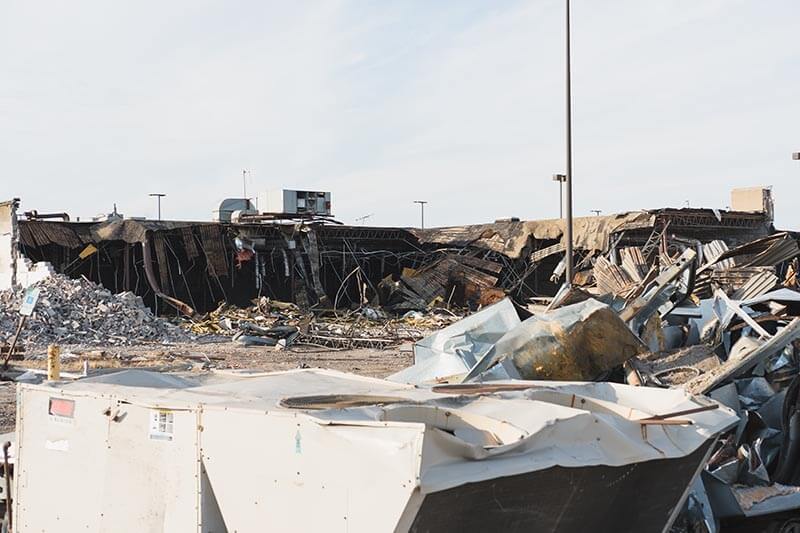
Montreal’s Seville Theatre once hosted Nat King Cole and Frank Sinatra, but like other once-great buildings, such as the old Toronto Star headquarters and Laurentian Hotel in Quebec, it became nothing more than demolition waste.
In the past year, the once revolutionary Empire Landmark Hotel has also disappeared after dominating the Vancouver skyline since 1973 – it is one of the tallest building in Vancouver to be knocked down, it had a revolving top floor restaurant, provided thousands of tons of concrete, steel, wood and other materials to be recycled.
But what happens when we decide to knock some of our buildings down?
According to Statistics Canada data, Construction, Renovation and Demolition (CRD) waste accounts for about 12% of all solid waste generated in Canada – so, while it’s not as significant as the total volume of other streams such as household garbage, large amounts can come from single projects.
And there are various estimates of how much scrap metal there is in demolition waste – with the UK-based Waste and Resources Action Programme saying the main components in structures ranging from homes to garages, to office blocks and skyscrapers can be about 59% concrete, 7% timber and 10% metal.
Once you’ve knocked the building down, sorting all these for recycling isn’t easy, especially if there is the lure of landfill – which is why local and regional governments are putting laws in place to stop companies, developers and homeowners taking this easy option.
One of the leaders has been the City of Port Moody which brought in a law in 2011 stating that anyone applying for a construction and demolition permit must recycle at least 70% of the waste created from it by the end of the project.
By only giving back deposits to managers who achieved this, it had a diversion rate of 84% of these materials from landfill two years later.
Others have followed, including Vancouver, which has ambitious plans for zero waste by 2040 and sees demolition as a key target area in achieving this.
Its Green Demolition Bylaw has been extended to cover most types of homes, with different requirements for properties depending on their age and how big they are.
A 2018 report stated about 10,000 tons were being diverted from landfills and incinerators a year - with the average diversion rate from pre-1940s homes being 86% and between 40% and 50% for traditional residentials.
Richmond Steel Recycling is one of the companies that gives a new lease of life to metals found in demolition waste – which includes copper used in pipes and electrical cables, steel from structural components and stainless steel in sinks.
Legislation is crucial to ensuring materials are salvaged and dealt with correctly as is evidenced by directives in Europe.
Construction and demolition makes up between 25% and 30% of all waste generated in the European Union, with the level of recovery and recycling varying greatly – from below 10% to more than 90% in its member states.
The EU warned that if it is not separated at source, it can contain hazardous waste “the mixture of which can pose particular risks to the environment and can hamper recycling”.
Many people will have fond memories of places like the old Seville Theatre in Montreal, which was built in 1929, and hosted Sammy Davis Jr, Louis Armstrong and a two-year run of The Sound of Music in the 1960s – but it shut in 1985, fell into disrepair and was demolished in 2010, with a condo now standing in its place.
Time catches up with many structures and a theatre of a very different kind was also turned to demolition waste this year.
Sporting theatre Allianz Park in Sydney, Australia, was a field of dreams that was built in 1988 and hosted 45,000 fans to watch major sporting and music events.
But after much protest and legal challenges, Michael Buble was the last person to perform there in October 2018, and it has been reduced to rubble, with plans to build a new modern venue on the site.
Not all threatened buildings end up on the scrap heap, though, thanks to the work of organizations such as the National Trust for Canada.
It says it Top 10 Endangered Places List “has become a powerful tool in the fight to save places that matter”, focusing on those used for worship, social centres, schools and other buildings that hold significant history and memories.